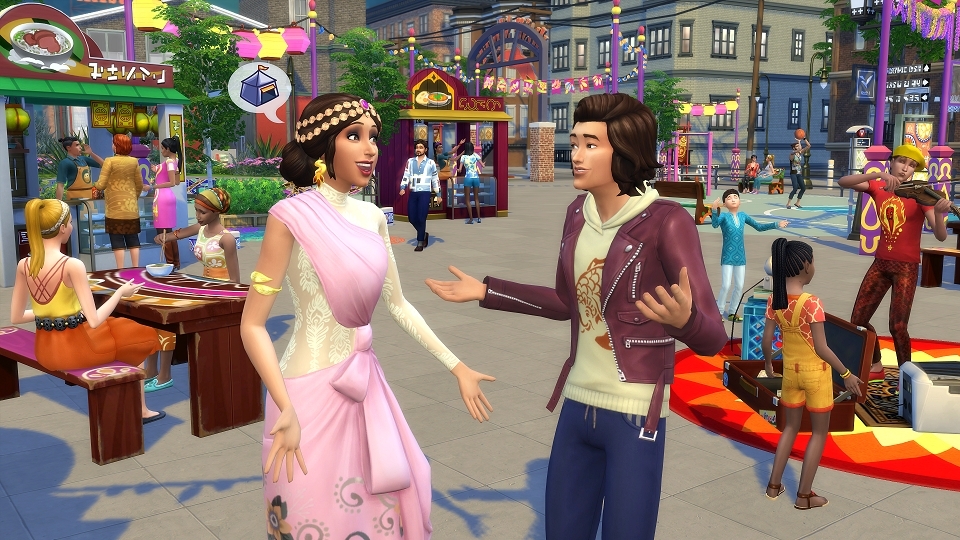

Tourism accounts for 20% of Las Vegas' GDP (compared with a national average of 6%) and 30% of jobs (double the national average).

The visitor economy – not just tourism, but also the enormously valuable MICE market – is all-important to Las Vegas. It has a comprehensive, downloadable access guide – developed with the Disabled People's Association of Singapore – which allows visitors to plan their visit and source information on the accessibility of specific exhibitions or festivals. The city's newest major attraction, a phenomenal architectural feat connecting the colonial-era City Hall and former Supreme Court to create the National Gallery, is a model of accessibility.
#Sims 4 city living xbox one free
There's a free shuttle service for wheelchair users and wheelchair rental for just $2 dollars per day – indicative of the increasing importance of intergenerational travel, particularly among Asian communities. One of Singapore's major tourist attractions, Gardens by the Bay, a unique and enthralling complex of horticultural displays, is fully wheelchair-accessible. Always smiling, welcoming, helpful and soft-spoken, they make a big difference for PWD to feel accepted and looked after." This sentiment was echoed by Joshi, who said, "While infrastructure and government spend is one thing, another major aspect that makes a big difference for mobility-challenged persons are the people of Singapore and their culture. Overwhelmingly, however, the most important factor for survey respondents was not physical accessibility but being treated with understanding and respect. In addition, more than 95% of pedestrian walkways, taxi stands and bus shelters are accessible to people living with a variety of impairments, and more than 85% of public buses are wheelchair-accessible.Īccording to Nilesh Joshi, who relocated from Mumbai to Singapore eight years ago, "For someone like me, having mobility challenges but not a wheelchair, the city offers huge convenience and allows me to independently move around using public transport and enjoy public amenities."ĭeaf and hearing-impaired public transport users are also well catered for: as deaf resident Adrian Yap remarked, "Whenever there is any announcement on the trains, we can see the instructions written on the screen." Yap also noted that "train officers are well trained to communicate with deaf people", underscoring the importance of disability awareness training. Unlike most underground metros, there is level access to every carriage on Singapore's MRT, which affords wheelchair users and people with impaired mobility both independence and dignity. In Singapore, the question is not, "What is accessible?" but rather, "What isn't?"Ī majority of survey respondents nominated Singapore due to its accessible public transport, which makes getting around the city a breeze. But as a disabled traveller, it's the high degree of accessibility that makes it especially attractive. Singapore has always been an easy travel destination for many compared with much of Asia, partly due to the excellent infrastructure and amenities, and partly because English is the lingua franca. Here, we explore four of the top cities, explaining what makes them a good place for PWD to visit and bringing additional insights from knowledgeable residents and visitors. The resulting data provides great understanding into what makes a city attractive to disabled travellers, from the range of accessible accommodation to the availability of accessibility information. The 2022 survey not only highlights the barriers to travel for people with disability (PWD), but respondents were also asked to nominate the cities they found most accessible and why, from which a top 10 was compiled. As tourism recovers from the ravages of Covid-19, the business case for not excluding the 1.3 billion people living with disability – one-sixth of humanity – has become even more compelling.Ī wide-ranging survey by the Valuable 500 of 3,500 PWD in five countries – the US, UK, Australia, China and Japan – around their travel habits and experiences provides invaluable insight into this question. In 2018 alone, the value of the so-called "purple pound" (the spending power of disabled people) to UK tourism was estimated at £15.3bn while 27 million travellers with disabilities in the US took 81 million trips and spent $58.7bn (£45.8bn) in that same year. What do disabled travellers look for when choosing a city to visit? This is important not only to those of us with disability, but also for cities themselves as they seek to tap into a large and growing accessible travel market.


 0 kommentar(er)
0 kommentar(er)
